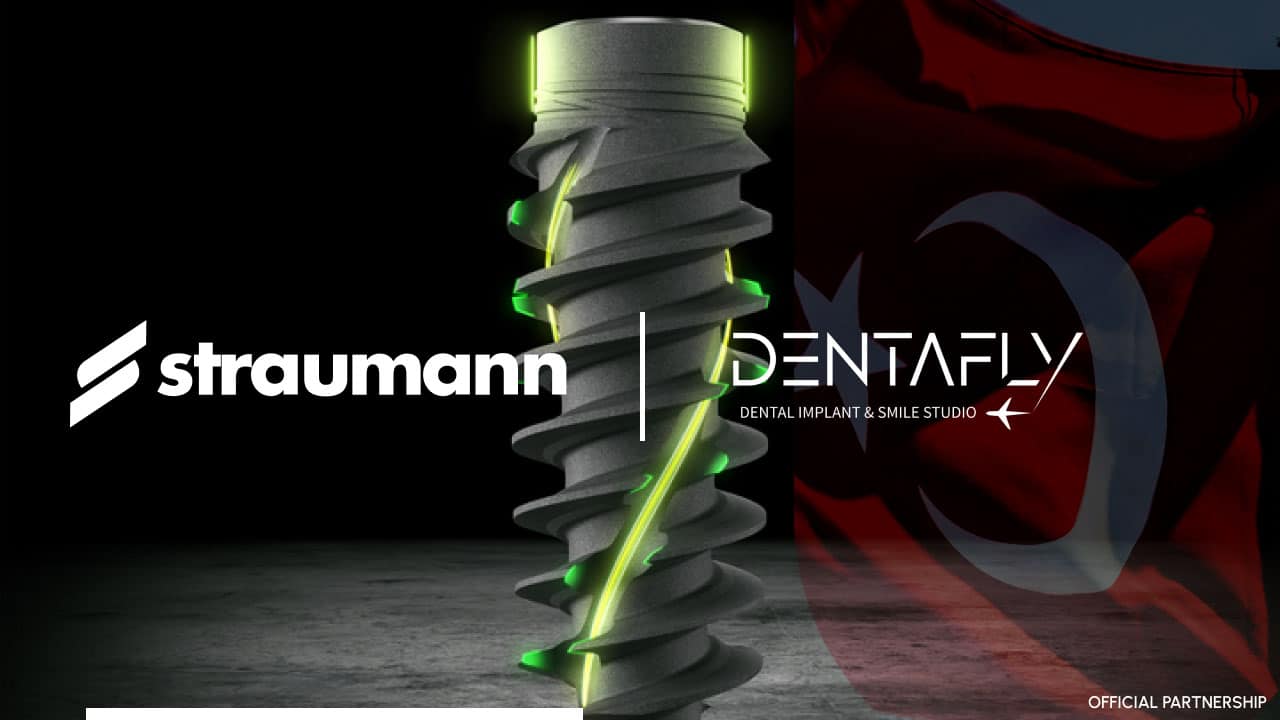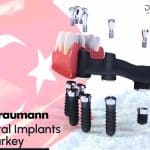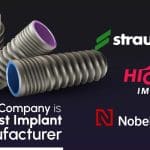Osseointegration (from Latin osseus “bony” and integrare “to make whole”) is the direct structural and functional connection between living bone and the surface of a load-bearing artificial implant (Wikipedia). Osseointegration is directly related to the dental implant surface material. The better the material is used, the better the osseointegration will be between the bone cells, blood cells, and the implant. Many researchers have been made to improve the quality of the surface material of the dental implants and what type of material is more close to our biological structure.
At first, the best dental implant companies have been researching to find the best material that our biological body structure will allow inside of the jaw bone for dental implants. They have found that titanium is the best material to manufacture dental implants. After titanium was certain that it would work with human biological structure, the dental implant companies started to improve the surface of the dental implants to increase the predictability of the dental implants and decrease the healing period.
What is Osseointegration?
Osseointegration, It basically defines the time that is required for the jaw bone to heal after the dental implants are placed inside. There are a couple of parameters that can increase the osseointegration: both the speed of the jaw bone healing and the quality of the jaw bone healing. There are various elements that come to play that help improve osseointegration for dental implants.
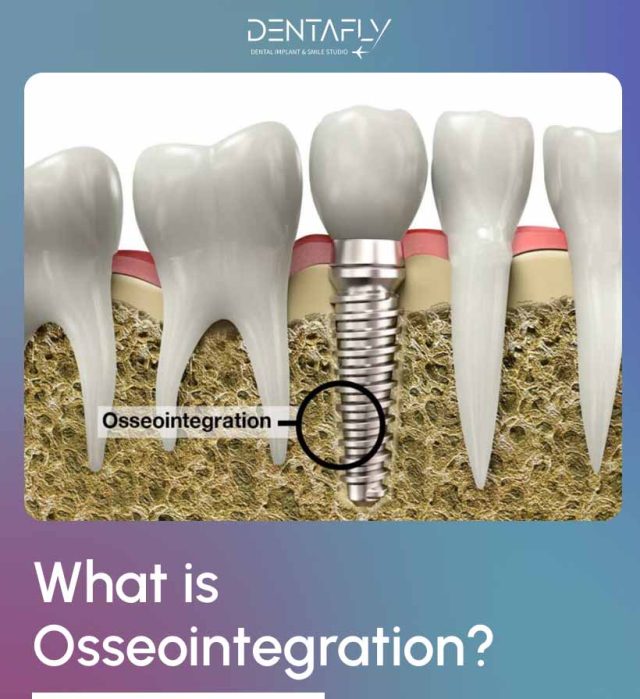
These are:
1.Biocompatibility of the implant material
2.Macroscopic and microscopic nature of the implant surface & designs
3.The status of the implant bed in both a health and a morphologic (bone quality) context
4.The surgical technique per se
5.The undisturbed healing phase
6.Loading conditions
(National Library of Medicine)
3 Steps of Osseointegration?
It is similar to when we fall, we cut our knees, elbows ,etc. and after that a protective layer covers the outside of the scar to stop the connection between any bacteria or infection from the inside. Our blood cells start to regenerate our skin and the healing process starts. When a dental implant is placed inside of the jaw bone, similar action is seen. After the dental implant pierces the jaw bone, the bone cells and blood cells start to get around the dental implant and the osseointegration begins. It is an important value that the dental implant should be titanium, which is the only strong material that has been found in dental implant dentistry yet. The strength and the stability of the titanium dental implants have not been surpassed by any other material. There are zirconia dental implants but in terms of strength and stability, the titanium dental implants are still the best option.
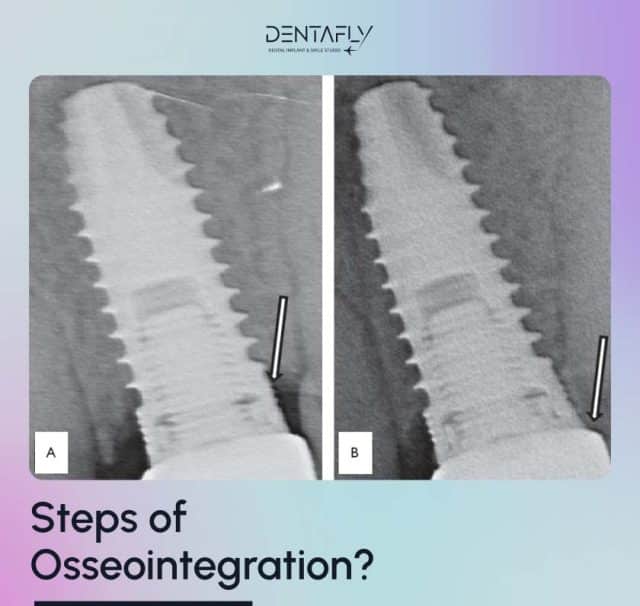
Osseointegration follows a common biological steps, that are divided into 3 steps:
- Incorporation by woven bone formation
- Adaptation of bone mass to load (lamellar and parallel-fibered bone deposition)
- Adaptation of bone structure to load (bone remodeling)
(National Library of Medicine)
What are the factors that determine Success and Failure of Osseointegration?
The process of dental implant operation is quite a complex issue. There are a lot of factors that can affect the process of success or failure. The success of failure factors begins with the surface material of the dental implant to the aftercare that must not be neglected by the patient after the operation. Of course, it is possible for an implant to fail even though the patient takes good care after the operation and/or the dental implant that is used is Straumann BLX, Hiossen ET III NH System, or Nobel Biocare Active implants. These dental implant brands are the best in the world.

Their surface materials are completed after years of research and clinical trials. The SLActive surface material of Straumann BLX dental implants, the NH (Nano-Hydrophilic) surface of the Hiossen dental implants, and the Active surface of Nobel Biocare dental implants are the best dental implant surface materials for osseointegration, bio-compatibility, and bio-resorption.
Bone and Dental Implant Interference
Even though the Straumann BLX dental implants, Hiossen ET NH System dental implants, or Nobel Biocare dental implants are being used and the operation was successful, any kind of interference for the osseointegration will extend the time of the healing period or will lead to failure of the dental implants.
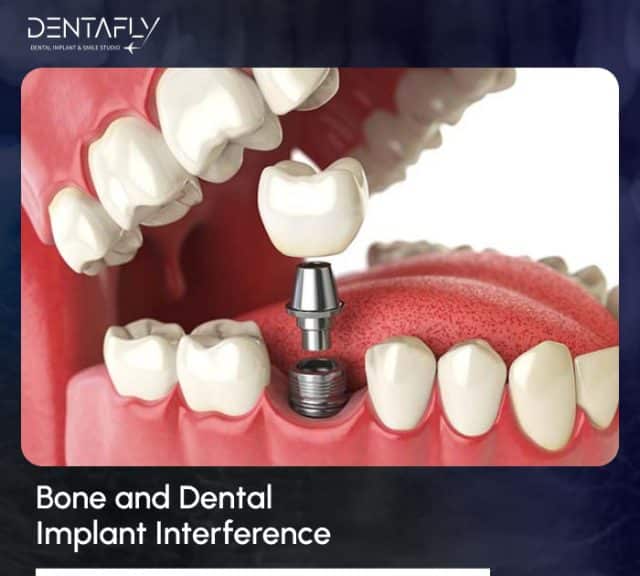
Every case and every patient is different. We are all human but there are many microscopical elements of our biology that can interfere with osseointegration. That is why every patient should be examined and evaluated individually. Depending on the case of the dental implant patient, we may or may not provide fixed and aesthetic temporary teeth, especially on All on 4 – 6 – 8 cases. If the bone level, quality, density, length, and width is not enough that we applied sinus lift and bone graft, we do not offer fixed and aesthetic temporary teeth. Not only providing fixed and aesthetic temporary teeth will extend the healing period, it can easily lead to a failed dental implant. There should not be any factor that can extend the osseointegration between the jaw bone of the patient and the dental implant. We, as Dentafly, plan everything according to every individual patient to reduce the risk of reducing osseointegration or failed dental implants to zero.
If the bone level, quality, density, length, and width is enough, then we are more than happy to provide fixed and aesthetic temporary teeth that are custom designed according to the patients’ mouth and gum arch to not to interfere with osseointegration.
Patients should be extra careful with the after care. Dental implants are extremely comfortable, strong, reliable, and stable to use but if the mouth hygiene is neglected, there can easily be problems such as infection or a simple canker sore may occur. Patients should keep brushing their teeth 2-3 times a day and also use floss, if possible with the treatment that they are getting, and the most important thing to use to make sure that any food residue becomes an infection is water shoot. These are similar to the instruments that we use in our clinic during treatments and they provide the best hygiene that will help osseointegration during the healing period.
Furthermore
If something has happened and you have lost some of your teeth, you should look to get a dental implant placed as soon as the bone heals the gap from the root of your tooth. The reason for this is because with the lack of teeth, the jaw bone that we need to place the dental implant will slowly be absorbed by the body and the sinus gap will start to hang down.
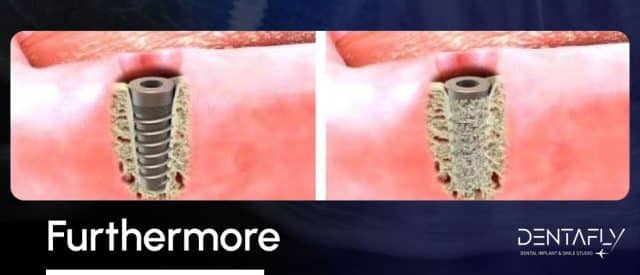
This will complicate the treatment process more and the osseointegration will extend to 4.5 to 6 months. In some cases, the patient has to come for 3 times due to lack of bone. Applying sinus lift and bone graft, the patient sometimes must wait for 6 months for the bone to be built from scratch and for the place of the sinus lift and bone graft to become strong and stable for the dental implant. After 6 months, the dental implant or dental implants will be placed and then the osseointegration will start again.
Get Free Online Consultation from Periodontist
References:



